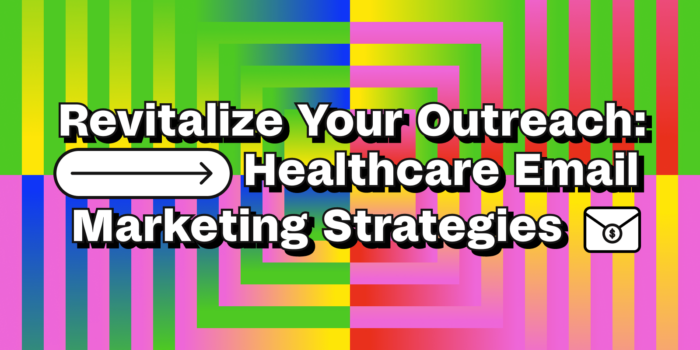More and more, we see the healthcare sector leverage marketing as a tool to drive positive impact, change, and outcomes. Through compelling storytelling and the strategic use of digital platforms, successful marketing campaigns engage and educate audiences on a deeper level. By creating emotional connections, they aim to humanize healthcare, inspire hope and leave lasting impressions.
From large medical facilities to nonprofit organizations, healthcare brands across the board create and distribute campaigns using a variety of channels, including social media, blogs, videos, and interactive websites, to amplify their message and drive engagement. Beyond promotion, these campaigns are all about connecting, building community, and providing valuable resources and support to people and caregivers navigating healthcare.
In this blog, we highlight nine remarkable healthcare marketing campaigns that exemplify effective storytelling, community building, and innovative approaches. Each of these campaigns tells a unique story and highlights the different ways healthcare organizations are using marketing as a catalyst to make a real difference. By engaging with these campaigns, we gain invaluable insights, learn from their strategies, and apply these lessons to shape the future of healthcare marketing.
Never miss out on the latest healthcare marketing trends
Best Healthcare Marketing Campaigns to Learn From
1. ”Compass” – Spring Health Providers
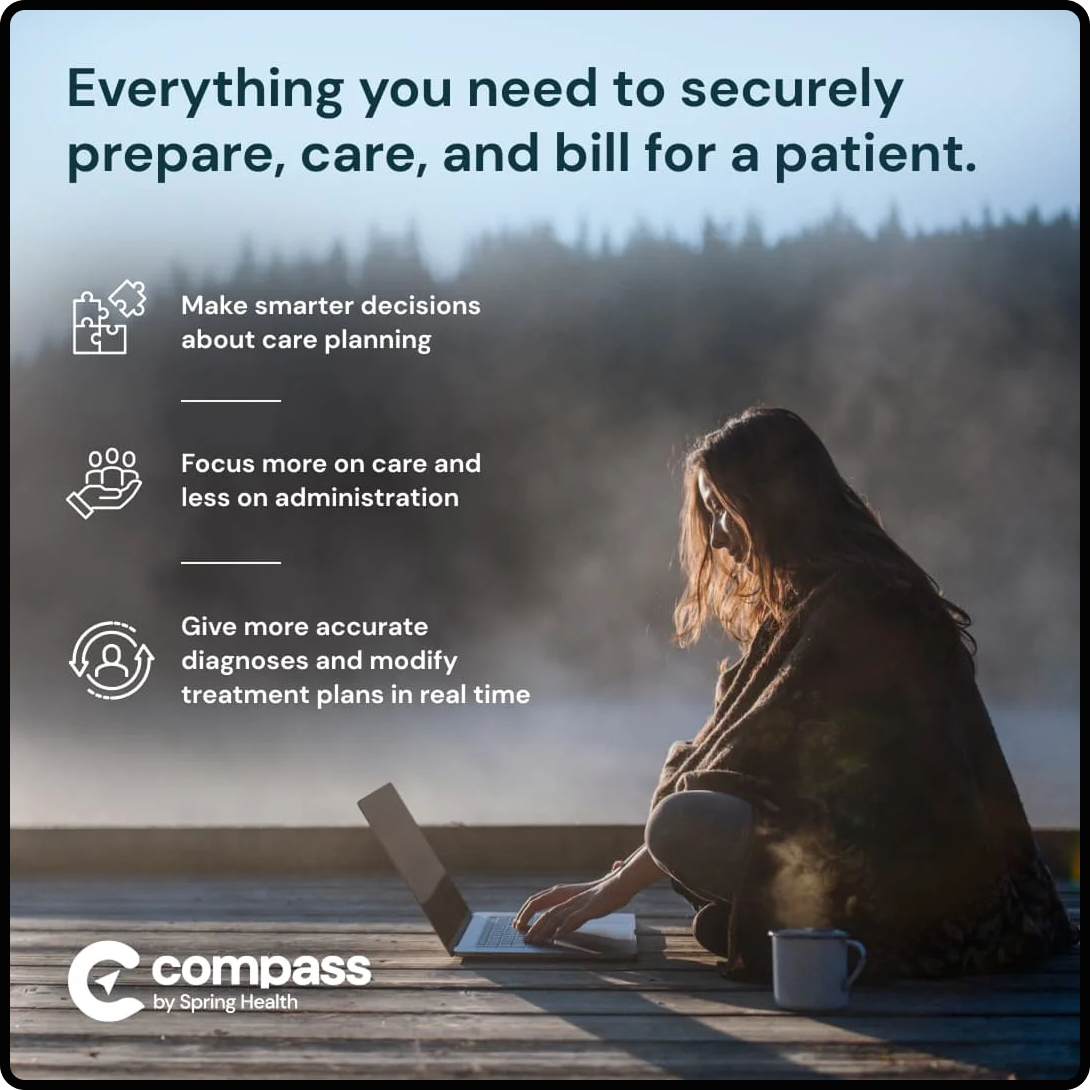
Who Is Spring Health?
Spring Health is a New York-based B2B behavioral health organization with a mission centered around eliminating barriers to mental health. They focus on making mental healthcare accessible and achievable by leveraging clinically validated AI technology.
Campaign Overview
They partnered with us to attract highly qualified mental health providers who align with the Spring Health mission. Their goal was to ensure a steady influx of skilled professionals to meet the growing demand for mental health services.
Impact and Community Engagement
To achieve this, we applied tailored marketing recruitment tactics and refined their digital marketing efforts to attract providers who met the criteria. Campaign efforts resulted in a staggering 113% increase in provider-qualified leads and a 58% increase in official hires.
What We Can Learn
Data can help identify optimal advertising spaces for your particular target audience to achieve a lower CAC.
The strategy behind this success was strategically placing ads on platforms where the target audience is most active per industry of partner companies. We leveraged data analytics to identify prime advertising spaces based on user behavior, demographics, and online habits.
2. “Concerned About Taking Opioids?” – Non-Opioid EXPAREL
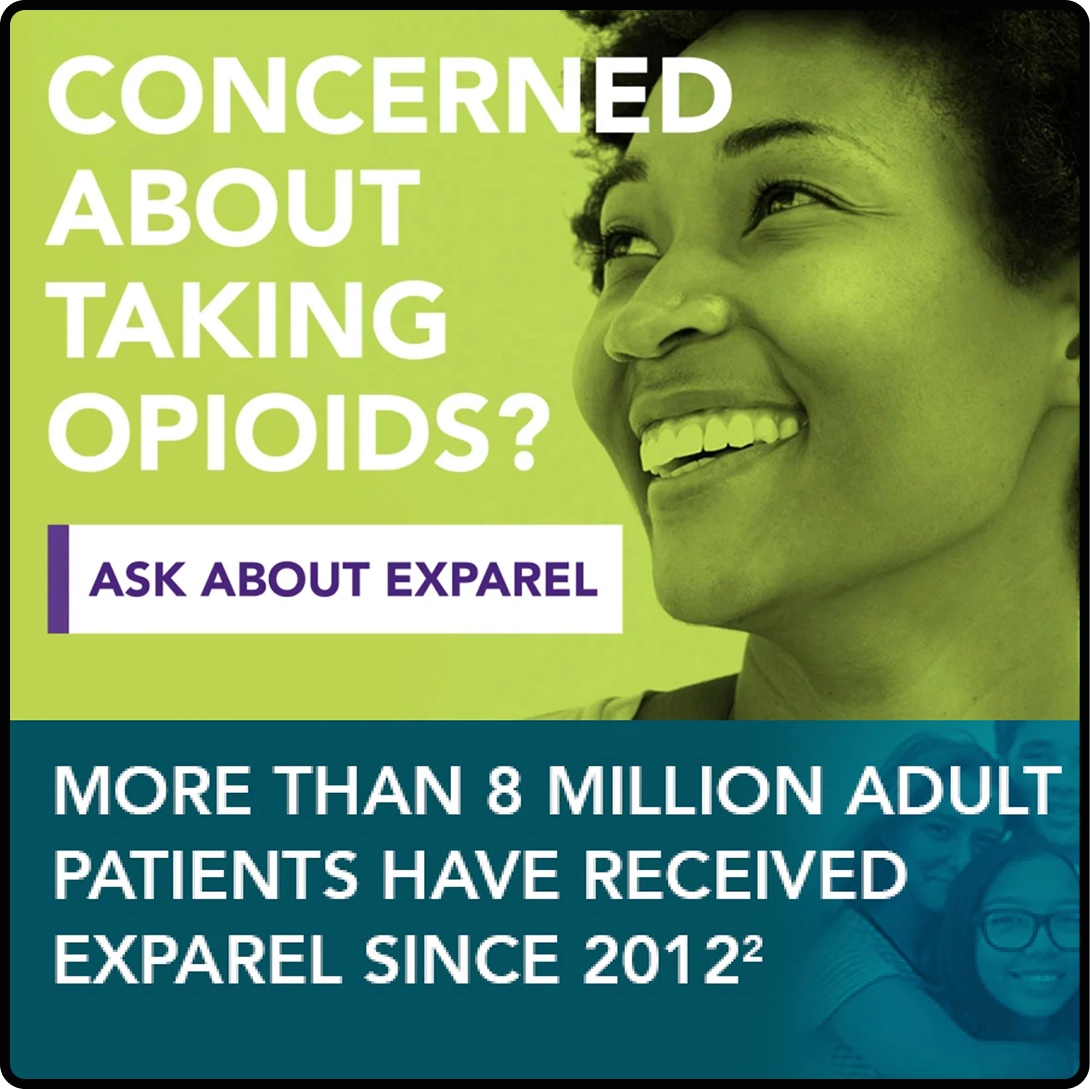
Who Is EXPAREL?
EXPAREL is a subsidiary of Pacira Biosciences. EXPAREL is a cutting-edge, long-acting non-opioid anesthetic that effectively manages postsurgical pain. Since its introduction in 2012, over 9 million patients have received EXPAREL as a safe and effective alternative to opioids.
Campaign Overview
They partnered with us to stand out amidst rising competition and bring awareness to non-opioid treatment options and alternatives. Their goal was to increase high-quality traffic that converts to leads.
To achieve this, we defined audience targeting and user engagement journies. We conducted website analysis and stakeholder interviews to better understand processes, needs, and opportunities. We also guided UX, content, and SEO efforts and made strategic, performance-based recommendations based on data to drive more engagement and leads.
Impact and Community Engagement
The campaign resulted in 307% more HCPs connected directly with EXPAREL to integrate into their practice, a 106% increase in direct traffic, and a 46% increase in organic sessions.
What We Can Learn
Benefit-driven ad creative can be effective when trying to educate and resonate with patients and providers.
While executing the display advertising strategy, we found that certain ad creatives performed particularly well. These creatives were designed to effectively communicate the benefits of EXPAREL as a non-opioid pain management solution and resonated with our target audience of healthcare providers and patients.
3. “Connect to What Matters Most” – Zepp Clarity
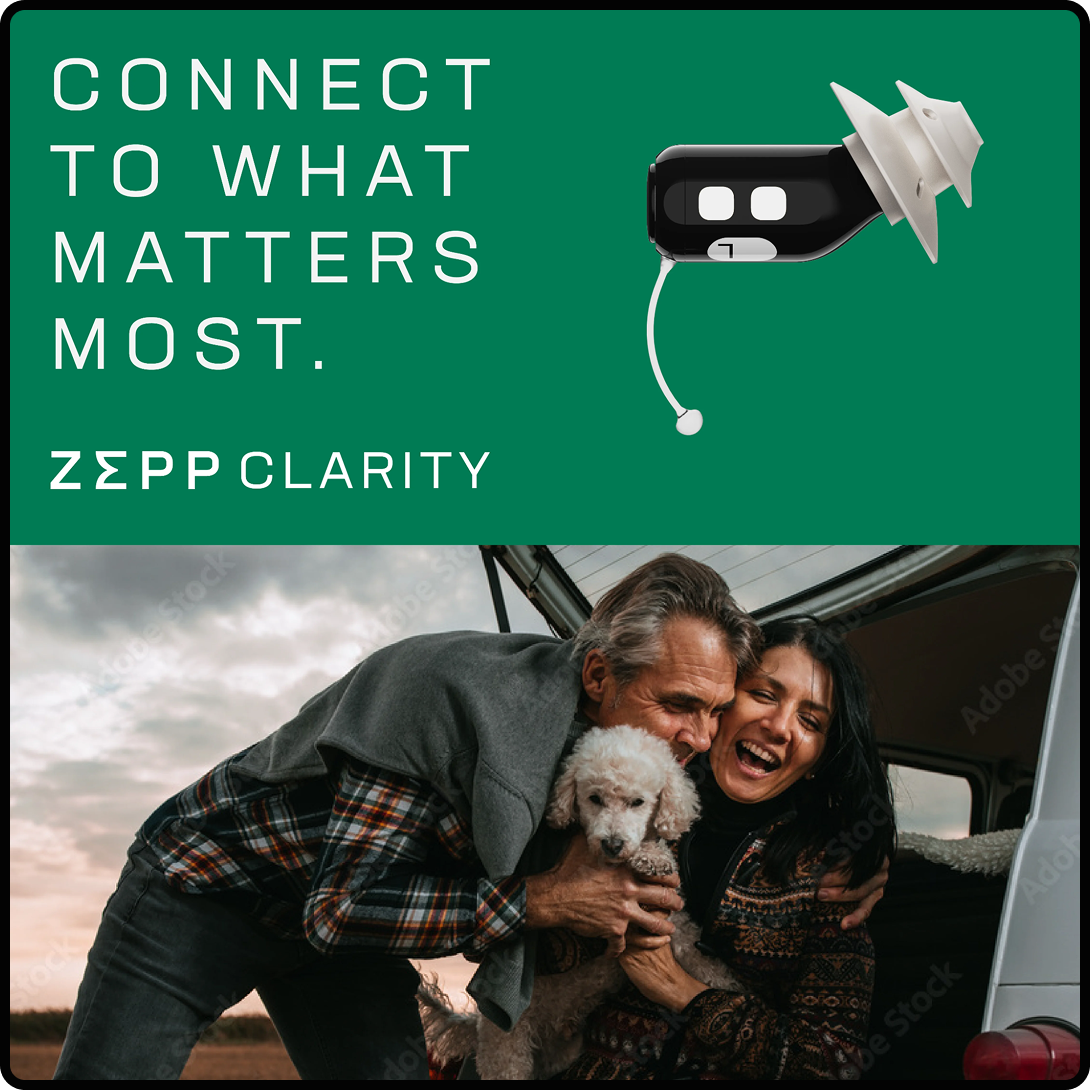
Who Is Zepp Clarity?
Zepp Clarity, a division of Zepp Health, is a global smart wearable health technology brand. Zepp Clarity focuses on empowering health, fitness, & well-being with hearing technology. They partnered with us to break into the U.S. market and increase user purchases of their flagship product, Zepp Clarity One.
Campaign Overview
To achieve this, we implemented a persona-specific acquisition strategy, conducted CRO and UI/UX improvements for the website, and developed a new digital marketing funnel that leverages a cross-channel marketing mix.
Impact and Community Engagement
As a result of this campaign, we achieved a 766% QoQ increase in Zepp Clarity One purchases, 67% QoQ decrease in cost per lead, and a 193% QoQ increase in ROAS.
What We Can Learn
An omnichannel approach can enable you to reach multiple segmented customer personas.
We learned that by seamlessly integrating with Zepp Clarity’s internal marketing team, we were able to build on and evolve the company’s strategy across various channels, including paid search, social, and display, which allowed us to reach multiple segmented personas based on demographic and interest-based characteristics.
4. “Patient Stories” – New York-Presbyterian Hospital
Who Is New York-Presbyterian Hospital?
New York-Presbyterian Hospital is one of the largest and most prestigious healthcare facilities in the United States. It’s known for providing exceptional health care to its communities by offering specialized medical services, conducting research, prioritizing individual patient care, and introducing technological innovations.
Campaign Overview
The “Patient Stories” campaign effectively captured the essence of the hospital’s compassionate and patient-centered approach. By showcasing real-life stories and experiences of patients who received care at the hospital, the campaign achieved its goal of sparking an emotional connection in its audience and highlighting the hospital’s commitment to providing exceptional healthcare services.
Impact and Community Engagement
The campaign fostered trust between consumers and New York Presbyterian Hospital. The heartfelt stories shared in the campaign made consumers feel that they would receive high-quality treatment from doctors who cared. The campaign solidified New York Presbyterian Hospital as a top choice for medical care in New York.
What We Can Learn
Sharing personal narratives can inspire hope, raise awareness, and highlight positive impact.
By presenting these personal narratives, the campaign achieved its goal of inspiring hope, raising awareness of the hospital’s services, and highlighting the positive impact New York-Presbyterian Hospital has on patients’ lives.
The campaign was praised and successful, likely because of the personal stories and emotional connections it sparked in viewers. At the core of the campaign was attention to and compassion for the patient experience, which came off very clearly.
5. “Sharing Mayo Clinic Blog” – Mayo Clinic
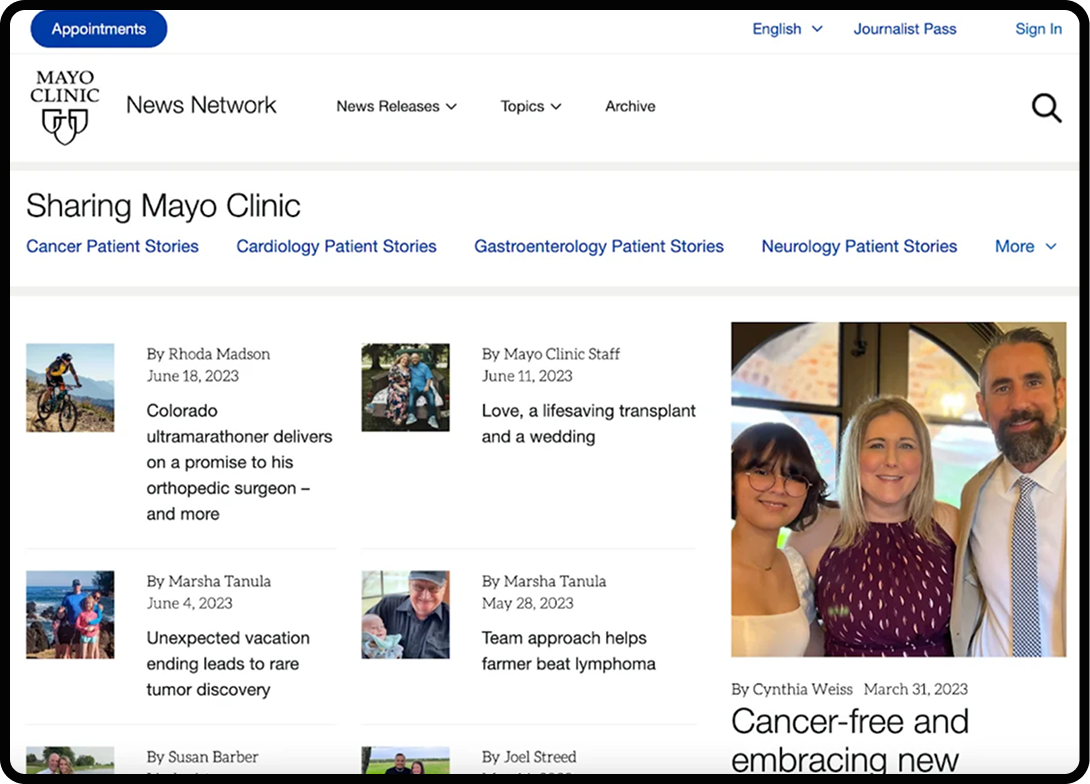
Who is Mayo Clinic?
Mayo Clinic is a world-renowned, nonprofit medical institution known for excellence in patient care, groundbreaking research, and education, making it a leader in providing comprehensive healthcare services.
Campaign Overview
The Mayo Clinic’s “Sharing Mayo Clinic Blog” is an online platform where patients, caregivers and medical professionals can share their personal stories, experiences and insights related to health and wellness. The blog allows individuals to share first-hand accounts of their journey, medical breakthroughs and the impact of Mayo Clinic’s services, fostering a sense of community and providing a unique perspective on the human side of healthcare.
Impact and Community Outreach
The “Sharing Mayo Clinic Blog” has become a valuable resource, providing inspiration and education to readers while supporting Mayo Clinic’s mission to advance medical knowledge and improve patient care.
The response to the blog has been overwhelmingly positive, gaining a loyal following and becoming a valuable resource for patients, caregivers, and medical professionals alike.
What We Can Learn
Personal stories are inspiring, informative, and relatable and can create a greater sense of community.
Readers appreciate personal stories and find them inspiring, informative, and relatable. The content of the “Sharing Mayo Clinic Blog” has resonated with its audience and fostered a greater sense of community and understanding. It has become a platform for open dialogue, support, and connection among people in the healthcare community.
6. “#YESMAMM”- (Carilion Clinic)
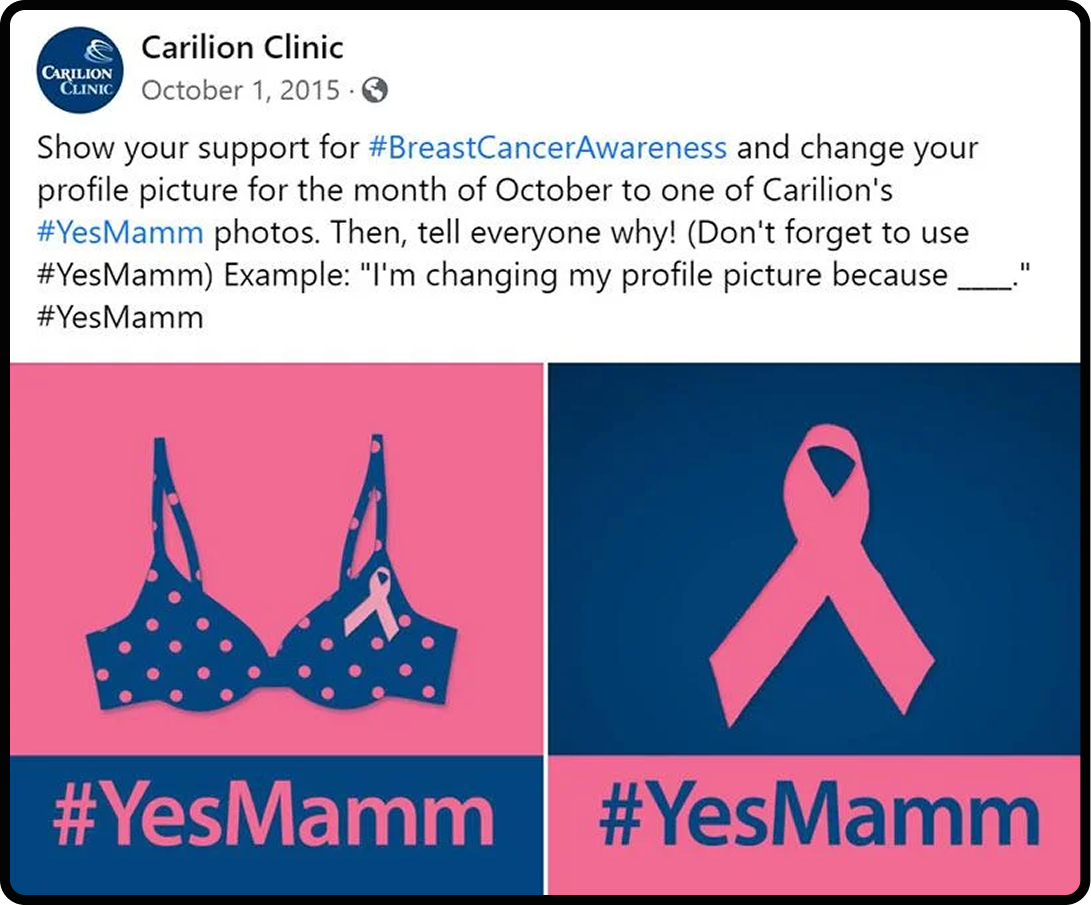
Who Is Carilion Clinic?
Carilion Clinic is a leading healthcare facility known for its comprehensive medical services, advanced treatments and commitment to population health. Carilion Clinic in Virginia is a trusted provider known for its commitment to patient care and innovative research.
Campaign Overview
Carilion Clinic’s “#YESMAMM” campaign was a breast cancer awareness initiative aimed to encourage prioritizing mammograms and emphasize the importance of early detection to women of all age groups. The hashtag is a play on words prompting women to say ‘Yes, Ma’am’ to their mammograms, with “Maam” also being an abbreviation for “mammogram.” To show their support for the cause, social media users were encouraged to change their profile pictures and use the hashtag during the month of October, Breast Cancer Awareness Month.
Impact and Community Outreach
Social media platforms such as Facebook, Twitter, and Instagram were flooded with statements of support and stories from the community directing interested individuals to the Carilion Clinic’s dedicated landing page.
What Can We Learn
User-generated material can increase engagement while also expanding access to necessary medical information to all communities.
This user-generated material increased engagement by making it easier for women to access important information, find clinics near them, and schedule appointments. The lives of many women, even ten years after the campaign’s launch, is a great testament to the campaign’s continued effectiveness and positive impact.
7. “We Dare You” – UnitedHealthcare
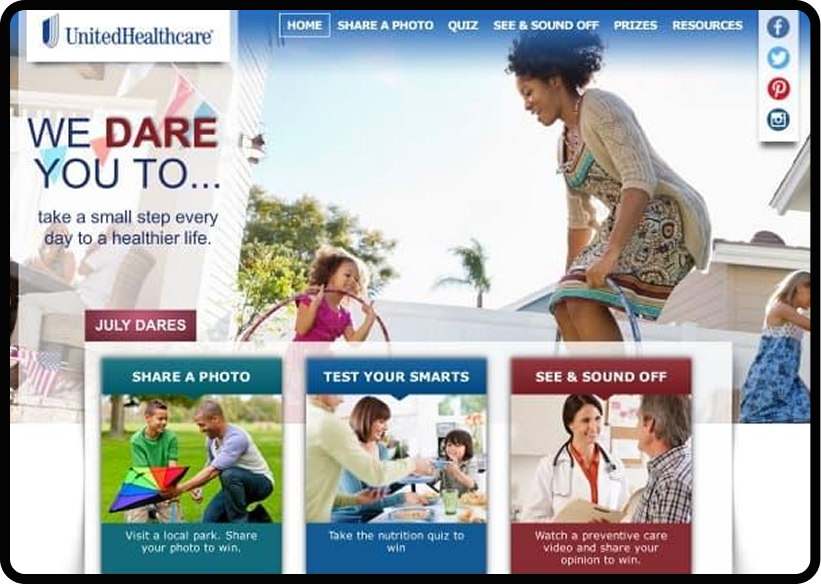
Who Is UnitedHealthcare?
UnitedHealthcare is a well-known health insurance company in the United States. Part of the larger UnitedHealth Group, it offers a wide range of health insurance plans and services and strives to improve access to quality health care and promote the health and well-being of individuals, families, and businesses.
Campaign Overview
UnitedHealthcare’s ‘We Dare You’ campaign targeted individuals who wanted to improve their health and well-being. The campaign was designed to encourage people to take on small, actionable challenges to make positive changes in their lifestyle and overall well-being. The We Dare You campaign was designed as a fun and interactive initiative that challenged participants to complete daily health-related tasks, such as drinking more water, getting enough sleep, or incorporating exercise into their daily routines. By presenting these tasks in an accessible and engaging way, the campaign aimed to inspire people to adopt healthier habits and make a positive change.
Impact and Community Outreach
The campaign received much recognition and accolades, including three Communicator Awards, two Hermes Awards, two Healthcare Advertising Awards, and an Aster Award. With more than 3,000 photos submitted by participants, the campaign’s success underscores the positive response and impact it had on inspiring and motivating people to adopt healthier habits.
What We Can Learn
Successful healthcare campaigns can aim to inspire people to adopt healthier habits and make a positive change for themselves.
The act of creating a movement for people to better themselves builds a sense of community around your campaign and leaves a lasting impact on the communities you serve.
Encouraging people to live better lives and giving them the tools they need to get there helps foster trust between consumers and their providers.
8. “Inside Women’s Healthcare Org” – Tia

Who is Tia?
Tia, a women’s healthcare organization, recently launched its first influencer marketing campaign to showcase its unique approach to patient care. Unlike traditional doctor’s offices, Tia’s clinics are designed with social media in mind, boasting aesthetically pleasing waiting and exam rooms adorned with houseplants, feminist literature, and geometric prints.
Campaign Overview
In collaboration with seven influencers, the campaign aimed to promote Tia’s newly opened Soho office and increase awareness about the company’s mission and growth. Several influencers were existing Tia members, ensuring authenticity in their content creation. Paid promotion was strategically employed to amplify the best-performing influencer posts.
TikTok and Instagram served as the primary platforms for the campaign, with potential plans to explore YouTube and Pinterest for future influencer content. Tia’s team also featured some members in an Out-of-Home (OOH) campaign alongside the influencer efforts.
Impact and Community Outreach
By tapping into micro- and nano-influencers, Tia successfully resonated with its target audience and witnessed positive results on social media. While exact metrics on membership growth and brand awareness are yet to be revealed, the campaign is already proving to be one of the most successful pieces of content in Tia’s social media portfolio.
What We Can Learn
An innovative influencer marketing strategy can effectively leverage the power of social media to create buzz.
As the campaign’s momentum grows, the company expects to allocate more of its marketing budget to influencer collaborations. With its innovative influencer marketing strategy, Tia is successfully leveraging the power of social media to create a buzz around women’s healthcare and redefine the patient experience in the digital age.
9. “Sick Cities” – One Medical
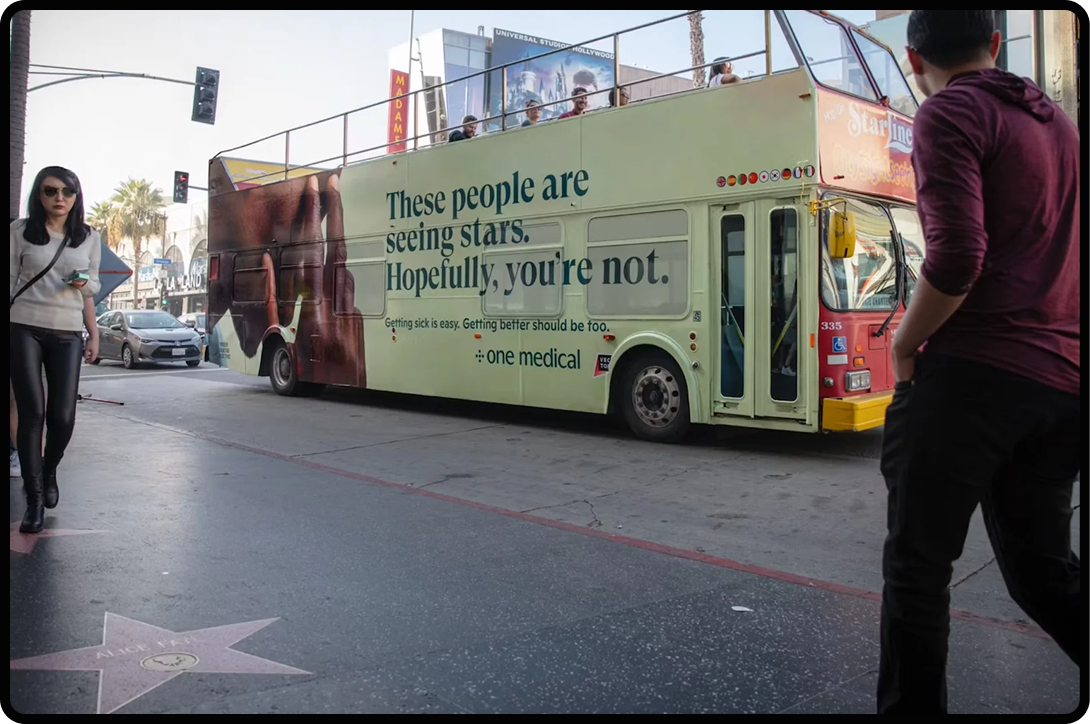
Sick Cities” – One Medical
Who Is One Medical?
One Medical is a San Fransisco based healthcare company now owned by Amazon. The healthcare clinic aims to provide exceptional healthcare for less. Offering memberships at affordable prices for those without insurance.
Campaign Overview
One Medical launched a compelling contextual ad campaign titled ‘Sick Cities’ to highlight the ease of falling ill during the cooler season amidst increased viral activity and slippery pavements due to rain. The campaign aims to shed light on the challenges people face in accessing healthcare promptly, as the average wait time to see a doctor is a staggering 24.1 days.
Partnering with Goodby Silverstein & Partners (GS&P) for the first time, One Medical created over 130 unique advertisements targeting locations notorious for spreading illnesses, such as Times Square and LA’s Sunset Strip. Each ad showcases relatable daily interactions that can easily contribute to the spread of germs.
As part of its expansion plans, One Medical has introduced the ‘Sick Cities’ campaign and undergone a complete brand-identity system redesign. The company collaborated with San Francisco design agency Moniker to develop the campaign’s photography to align with their growth within existing markets and new geographies and incorporate new service offerings in pediatrics and mental health.
Impact and Community Outreach
The campaign led to more visibility and community engagement for One Medical and helped position them as a reliable healthcare provider that consumers can trust to consistently deliver quality care.
What We Can Learn
Leverage the power of context and relatable experiences.
The campaign’s reach will extend to online platforms, where social and digital advertisements respond to people’s sickness- and injury-related searches. By leveraging the power of context and relatable experiences, One Medical aims to emphasize the importance of their improved doctor’s office experiences and make healthcare easily accessible for those in need. As they continue expanding their services and number of offices, the ‘Sick Cities’ campaign is pivotal in creating awareness and enhancing the overall healthcare experience.
Frequently Asked Questions
How do you create a marketing strategy for healthcare? Lessons learned from the success of these campaigns
Several important lessons can be learned from the combination of these campaigns for creating successful healthcare marketing campaigns:
- Humanize the experience: effective healthcare marketing campaigns engage audiences on an emotional level by telling authentic patient stories and experiences. By showing the human side of healthcare, campaigns can generate empathy, inspire action, and create a deeper connection with the target audience.
- Leverage digital platforms: Using digital platforms such as websites, social media, and blogs allows healthcare organizations to reach a broader audience and engage with them in an interactive and meaningful way. Engaging online communities, educational resources, and user-generated content can increase engagement and create a sense of belonging.
- Focus on community and support: building a sense of community and providing support networks for patients, caregivers, and healthcare professionals can significantly impact the success of a campaign. By creating platforms for sharing experiences, providing resources, and fostering dialog, campaigns can empower individuals and improve connections within the healthcare community.
- Promote awareness and education: Educating the public and raising awareness about specific health issues or diseases is an important aspect of healthcare marketing campaigns. By dispelling misconceptions, providing accurate information, and promoting early detection and prevention, campaigns can contribute to positive health outcomes and empower individuals to take control of their well-being.
- Include engaging and interactive elements: Successful campaigns often include elements that encourage participation, such as contests, challenges, or interactive experiences. If the campaign is fun, relatable, and memorable, it is more likely to resonate with the target audience and generate meaningful engagement.
- Measure and adjust: By tracking campaign metrics such as reach, engagement, and results, healthcare organizations can evaluate the effectiveness of their marketing efforts. By continuously monitoring and analyzing data, campaigns can be adjusted and optimized to better meet the needs and preferences of the target audience.
What are the benefits of healthcare marketing campaigns?
Healthcare marketing campaigns play a crucial role in addressing the unique challenges faced by the healthcare industry and offer a wide array of benefits for healthcare providers. By employing effective marketing strategies, healthcare agencies can bridge the trust gap with patients and maximize their digital presence, improving brand awareness and increasing patient engagement.
One significant benefit of healthcare marketing campaigns is the opportunity to enhance brand awareness. Despite being part of the healthcare industry, pharmaceutical companies and healthcare providers are still brands that need recognition and trust from their audience. In today’s digital age, where over 77% of healthcare patients start their treatment journey through search engines, having a solid online presence is essential. A well-executed healthcare marketing strategy can showcase services in an accessible and appealing manner, attracting potential patients and increasing brand awareness.
Also, healthcare marketing campaigns allow organizations to reach new audiences. As the public’s information-gathering habits have shifted significantly with the growth of social media, healthcare providers must adapt and engage with potential customers on these platforms. By utilizing various digital marketing channels such as social media posts, interactive campaigns, and video marketing strategies, healthcare companies can reach and resonate with new and younger prospective patients who may need to be aware of their services.
Marketing campaigns in a highly competitive healthcare industry provide a significant competitive advantage. By utilizing publications, reports, and digital and print advertising, healthcare providers can directly communicate with prospective patients about the quality of their services, the level of care they offer, and the benefits of choosing their healthcare resources.
This targeted approach helps position healthcare companies as the most viable option for patients in a saturated market, promoting patient loyalty and retention.
Moreover, healthcare marketing campaigns reduce the spread of misinformation in the industry. Accuracy and trustworthiness are paramount in healthcare, where misinformation can severely affect patients’ health and well-being. Healthcare providers can use marketing channels to disseminate critical and accurate information about their products and services through regular, targeted communication with their audiences. Doing so strengthens their relationships with patients and potential clients, building trust and credibility.
What are the 5 Ps of healthcare marketing?
The 5 Ps of healthcare marketing are essential elements that strategically position a medical practice effectively. These elements include Product, Price, Place, Promotion, and People, each contributing to the success and visibility of the practice.
1. Product
The first P, Product, represents the core of your medical practice and what sets it apart from others in the field. It is vital to showcase the unique aspects of your practice, such as specific treatments, cutting-edge technologies utilized, and innovative services like video consultations. By highlighting these compelling factors, you can attract new patients to your practice and build a solid patient base.
2. Price
The Price aspect is important for patients when considering medical services. Understanding the costs associated with your practice and offering transparent and competitive pricing is crucial. Striking a balance between pricing and the value provided will help you remain competitive with other practitioners while meeting your patients’ expectations.
3. Place
Place, or the location of your medical practice, plays a critical role in attracting new patients. Accessibility and visibility are key factors to consider. Effective digital channels like Google Analytics and specialized platforms can enhance your practice’s online presence and discoverability. Ensuring potential patients can easily find you and schedule appointments is vital for practice growth.
4. Promotion
Promotion, the third P, is essential for attracting new patients and increasing awareness of your medical practice. Employing a comprehensive digital marketing strategy is crucial, involving various creative campaigns through social media, online ads, email campaigns, and informative blog posts. Tailoring your promotional messages to your target audience and adapting them to different digital channels ensures maximum reach and impact.
5. People
The last P, People, encompasses your staff and patient population, which is pivotal to your practice’s success. Understanding your patient population’s needs and expectations enables you to effectively offer suitable solutions that meet their requirements. On the other hand, having competent and qualified staff ensures smooth operations and excellent patient experiences, from appointment scheduling to billing.
Successful healthcare marketing campaigns are based on the principles of authenticity, digital engagement, community support, education, interactivity, and data-driven optimization. By understanding and applying these lessons, healthcare organizations can create impactful campaigns that increase awareness, foster connections, and ultimately improve health outcomes.





